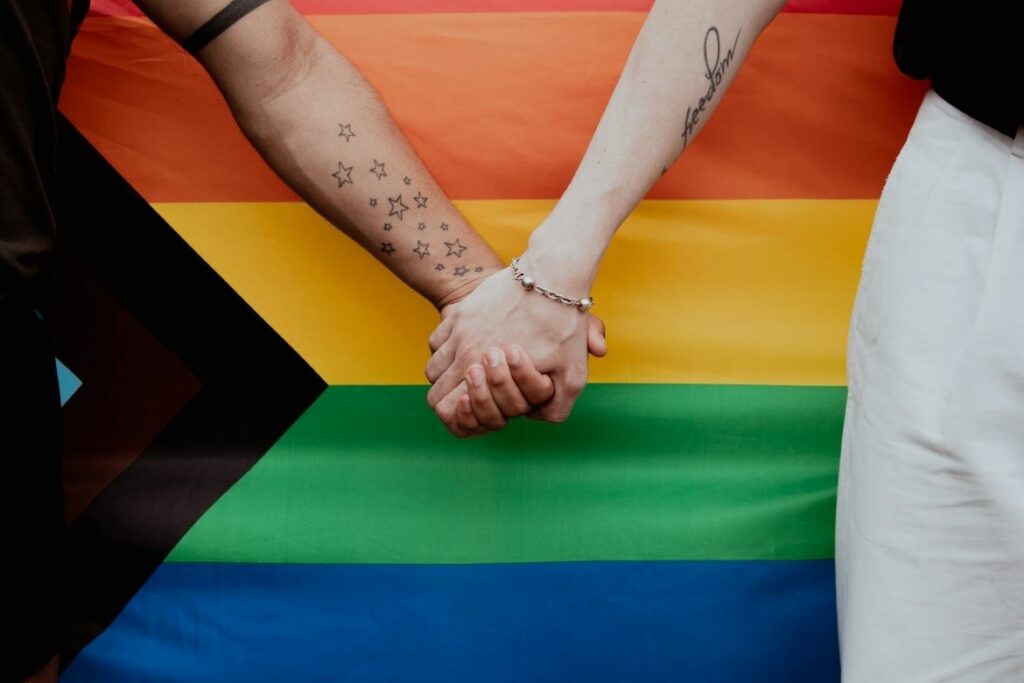LGBTQ affirmative therapy is a type of psychotherapy that is specifically designed to support individuals who identify as lesbian, gay, bisexual, transgender, or queer (LGBTQ). The goal of this therapy is to help individuals explore and embrace their sexual orientation or gender identity, while also addressing any related mental health concerns or challenges they may be experiencing. In this blog, there is detailed information about LGBTQ Affirmative Therapy, its working, benefits, and more.
Contents
What Is LGBTQ Affirmative Therapy?

LGBTQ affirmative therapy is a therapeutic approach that can support individuals who identify as part of the lesbian, gay, bisexual, transgender, and queer (LGBTQ) community. It focuses on creating a safe, non-judgmental space for individuals to explore their gender and sexual identities and to work through the unique challenges that they may face as a result of living in a society that is often not accepting of LGBTQ individuals.
The goal of LGBTQ affirmative therapy is to help clients develop a positive sense of self and to improve their overall well-being. This type of therapy recognizes that LGBTQ individuals face a unique set of challenges, including discrimination, social isolation, and internalized stigma. By creating a supportive and accepting environment, LGBTQ affirmative therapy can help clients work through these challenges and build a sense of self-acceptance and self-worth.
Principles of LGBTQ Affirmative Therapy
The following are some of the key principles of LGBTQ affirmative therapy:
- Respect for Diversity: This principle recognizes that every individual is unique and that each person’s experiences, beliefs, and values are valid. LGBTQ affirmative therapy respects the diversity of clients’ experiences and recognizes that there is no one-size-fits-all approach to working with LGBTQ individuals.
- Non-Judgmental Attitude: LGBTQ affirmative therapy is a judgment-free zone where clients are accepted for who they are without being judged or criticized. The therapist creates a safe space where clients feel comfortable expressing their thoughts and feelings without fear of being judged.
- Cultural Sensitivity: This principle recognizes that individuals from different cultural backgrounds may have unique experiences and perspectives on LGBTQ issues. Affirmative therapists take the time to understand clients’ cultural backgrounds and incorporate that knowledge into their therapeutic approach.
- Empowerment: LGBTQ affirmative therapy aims to empower clients to take control of their lives and to develop a positive sense of self. Therapists work with clients to help them set goals and develop strategies to achieve those goals.
- Collaboration: This principle emphasizes the importance of collaboration between the therapist and the client. The therapist works with the client to set goals and develop strategies for achieving them. Clients take an active role in their therapy and collaborate with their therapist to find solutions that work for them.
- Affirmation: Affirmation is the cornerstone of LGBTQ affirmative therapy. The therapist affirms the client’s gender and sexual identities and supports them in developing a positive sense of self. The therapist also helps clients navigate societal stigma and discrimination and provides them with tools to cope with these challenges.
- Education: Education is an important aspect of LGBTQ affirmative therapy. Therapists provide clients with information about LGBTQ issues and help them understand the unique challenges that LGBTQ individuals face. They also help clients develop skills to navigate these challenges and advocate for themselves.
- Advocacy: Advocacy is an essential component of LGBTQ affirmative therapy. Therapists help clients develop the skills to advocate for themselves and educate others about LGBTQ issues. They also work to promote social justice and equal rights for all individuals, regardless of their gender or sexual identity.
Techniques Used In LGBTQ Affirmative Therapy

This therapy utilizes a range of techniques to help individuals explore and embrace their sexual orientation or gender identity, while also addressing any related mental health concerns or challenges they may be experiencing. Below are some of the common techniques used in LGBTQ affirmative therapy:
- Creating a Safe and Nonjudgmental Space: One of the most important techniques used in LGBTQ affirmative therapy is the creation of a safe and non-judgmental environment. The therapist aims to create a space where the individual feels comfortable sharing their thoughts and feelings about their sexual orientation or gender identity without fear of judgment or rejection.
- Building Trust and Rapport: Building trust and rapport is crucial in any form of therapy, but it is especially important in LGBTQ affirmative therapy. The therapist must establish a strong and trusting relationship with the individual to create a safe and supportive therapeutic alliance.
- Addressing Internalized Homophobia or Transphobia: Many LGBTQ individuals have internalized negative beliefs and attitudes about their sexual orientation or gender identity due to societal stigma and discrimination. The therapist works with the individual to identify and challenge these negative beliefs and replace them with positive self-talk and affirmations.
- Education and Information: Education and information about sexual orientation and gender identity can be helpful for individuals who may feel confused or uncertain about their identity. The therapist can provide information about different sexual orientations and gender identities, and help the individual understand their own experiences and feelings.
- Mindfulness and Acceptance: Mindfulness and acceptance techniques can help individuals cultivate self-compassion and acceptance. By focusing on the present moment and accepting their thoughts and feelings without judgment, individuals can develop a deeper sense of self-awareness and self-acceptance.
- Cognitive-Behavioral Therapy (CBT): CBT is a therapeutic approach that focuses on identifying and changing negative thought patterns and behaviors that may be contributing to mental health challenges such as anxiety or depression. In the context of LGBTQ affirmative therapy, CBT helps individuals challenge internalized homophobia or transphobia and to develop more positive self-talk and coping skills.
- Family Therapy: Family therapy can be particularly helpful for LGBTQ individuals who may be struggling to navigate conflicts or challenges with their families of origin. In family therapy, the therapist works with the entire family unit to help them understand and accept the individual’s sexual orientation or gender identity and to improve communication and relationship dynamics.
- Group Therapy: Group therapy can be a powerful tool for LGBTQ individuals to connect with others who share similar experiences and challenges. In a group therapy setting, individuals can receive support, feedback, and guidance from both the therapist and their peers, while also practicing important social skills such as communication, assertiveness, and boundary-setting.
Sessions of LGBTQ Affirmative Therapy
The therapy process involves a series of sessions that can help with the needs and goals of the individual seeking treatment. Below is an overview of what to expect in a typical session of LGBTQ affirmative therapy:
- Initial Consultation: The first session of LGBTQ affirmative therapy is usually an initial consultation, during which the therapist and individual discuss the reasons for seeking therapy, the individual’s goals for therapy, and their history and experiences related to their sexual orientation or gender identity. This session is an opportunity for the therapist and individual to get to know each other, establish a therapeutic relationship, and determine if LGBTQ affirmative therapy is the right fit for the individual’s needs.
- Assessment and Goal-Setting: Following the initial consultation, the therapist may conduct a more in-depth assessment to gain a better understanding of the individual’s mental health concerns, experiences related to their sexual orientation or gender identity, and any other factors that may be impacting their well-being. Based on this assessment, the therapist and the individual work together to develop a treatment plan that outlines the goals and objectives of therapy.
- Exploration and Processing: In subsequent sessions, the therapist and individual work together to explore and process the individual’s thoughts and feelings related to their sexual orientation or gender identity. This may involve discussing experiences of discrimination or stigma, exploring questions about their identity, and processing emotions related to coming out or other life transitions.
- Skill-Building and Coping Strategies: LGBTQ affirmative therapy may also involve skill-building and coping strategies that can help the individual manage mental health challenges such as anxiety or depression. This may include cognitive-behavioral techniques, mindfulness practices, or communication skills training.
- Support and Validation: Throughout the therapy process, the therapist provides ongoing support and validation to the individual. This may involve offering reassurance and encouragement, acknowledging the individual’s strengths and accomplishments, and providing a safe and non-judgmental space for them to express themselves.
- Termination and Follow-Up: As the individual makes progress toward their therapy goals, the therapist and individual work together to determine when it is appropriate to end therapy. The termination process may involve reviewing progress made, discussing ongoing support and resources, and planning for future self-care and well-being.
Pros and Cons of LGBTQ Affirmative Therapy

Below are some of the potential advantages and disadvantages of LGBTQ affirmative therapy:
Pros
- Increased self-awareness and self-acceptance: This can help individuals explore and understand their sexual orientation or gender identity more deeply, and to feel more comfortable and confident expressing their true selves.
- Improved Mental Health and Well-being: By addressing mental health challenges such as anxiety, depression, or trauma, this therapy can help individuals feel more stable and resilient, and to experience greater emotional and psychological balance.
- Stronger Relationships and Support Systems: Through group therapy or family therapy, LGBTQ individuals can build stronger connections with others who understand and accept them, and who can provide ongoing support and encouragement.
- Increased Empowerment and Advocacy: By learning how to assert their needs and boundaries, and stand up against discrimination and stigma, LGBTQ individuals can become more empowered and effective advocates for themselves and their communities.
Cons
- Limited Availability: Access to LGBTQ affirmative therapy may be limited in some areas due to a lack of trained therapists or resources.
- Cost: The cost of this therapy may be prohibitive for some individuals, particularly if they do not have insurance coverage or access to sliding-scale or low-cost therapy services.
- Potential Negative Reactions: Although rare, some individuals may have negative reactions to LGBTQ affirmative therapy if they are not ready or willing to explore their sexual orientation or gender identity.
- Possible Reluctance to Share Personal Information: Some individuals may be reluctant to share personal information about their sexual orientation or gender identity due to fear of discrimination or stigma.
Conclusion
Overall, LGBTQ affirmative therapy can be a valuable and effective form of psychotherapy for individuals who identify as LGBTQ. It provides a safe and supportive environment for individuals to explore and embrace their sexual orientation or gender identity while also addressing any related mental health concerns.
It is important for individuals to carefully weigh their options and consider the potential pros and cons before deciding if LGBTQ affirmative therapy is the right fit for their needs and goals.
For more information, please contact MantraCare. The LGBTQ community encompasses individuals who identify as lesbian, gay, bisexual, transgender, and queer. If you have any queries regarding Online LGBTQ Counseling experienced therapists at MantraCare can help: Book a trial LGBTQ therapy session


